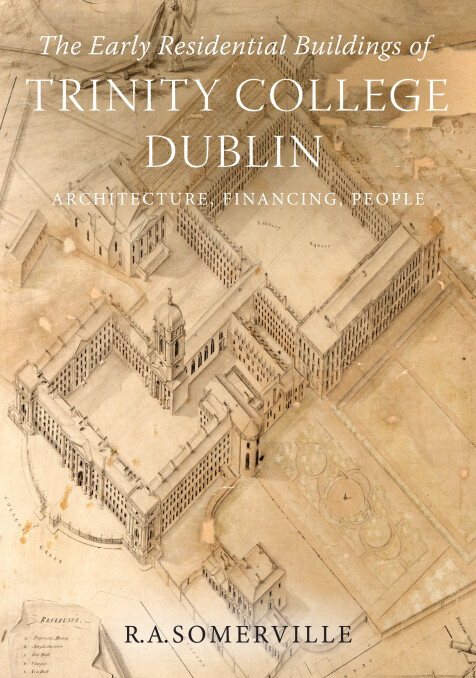The early residential buildings of Trinity College Dublin
Architecture, financing, people
R.A. Somerville
This book contains a history of the early buildings of Trinity College, from the Elizabethan Quadrangle up to the residential ranges of the early eighteenth century. Among all those red-brick buildings only the Rubrics remains, albeit much altered, to suggest what Trinity College looked like before the 1750s, when replacement of the early buildings began.
Why and when were new buildings added to the College, beyond the original Quadrangle? How were they funded? Who designed them? Where were materials sourced? What can be said about the architecture of the buildings, all of which, apart from the Rubrics, were pulled down in the eighteenth and nineteenth centuries? Who managed their construction on the College’s behalf, and who carried out the building work? How were essential services provided? The book answers all of these questions, and en route it explores an almost forgotten event, the disastrous fire of February 1726/7, in which at least one house in Library Square was destroyed and several more were damaged.
The second part of the book explores the community of residents of the early buildings up to the end of the nineteenth century when the range known as ‘Rotten Row’ was pulled down, leaving the Rubrics as the only representative of the early College. Where did Trinity’s students come from: geographically, socially, and denominationally? What were residential conditions like? What is known about College servants? Who lived in the old College buildings? Some famous names appear – for example the colonial governor of Connecticut John Winthrop, Oliver Goldsmith, the United Irishman Henry Sheares, Douglas Hyde – along with others who are less well-known but whose stories are nonetheless remarkable. The book ends with a memoir of the Rubrics in recent times.
R.A. Somerville, a fellow emeritus of Trinity, lectured in economics at the College for over forty years. He has a long-standing interest in architectural history and the history of the College.

